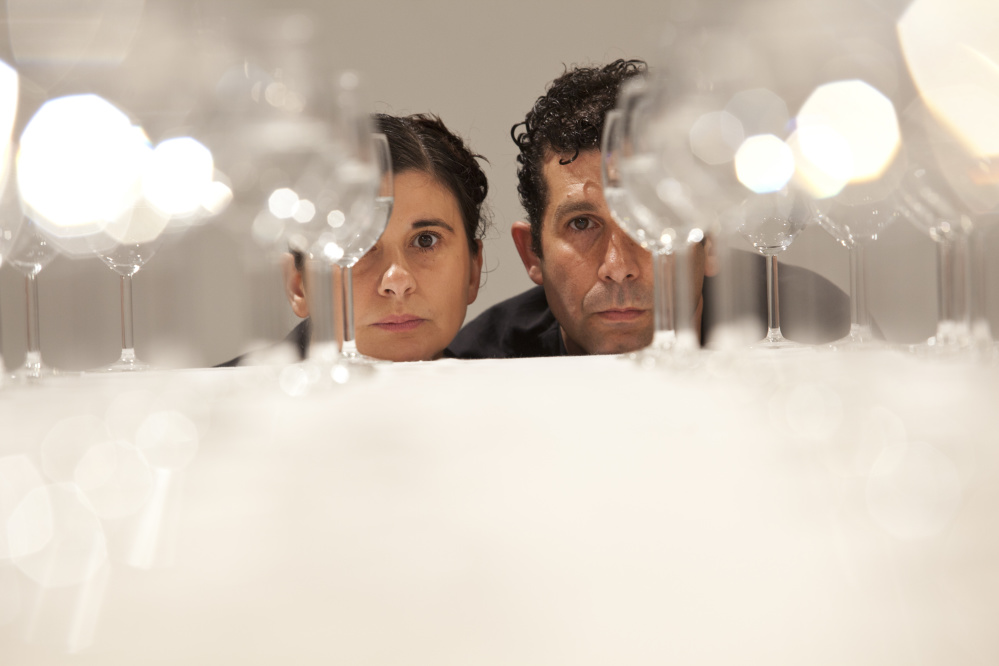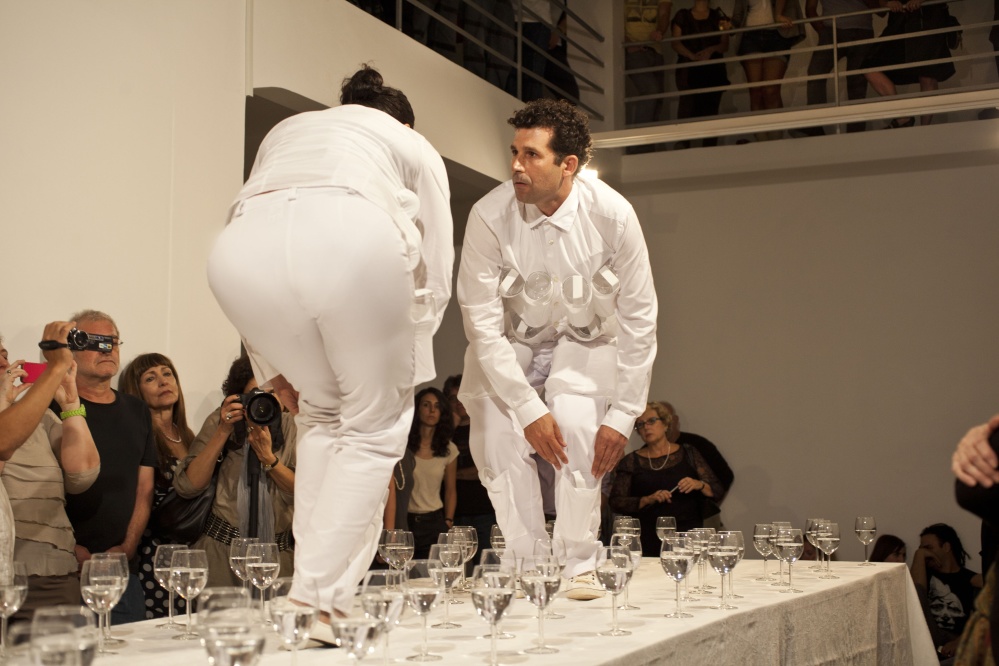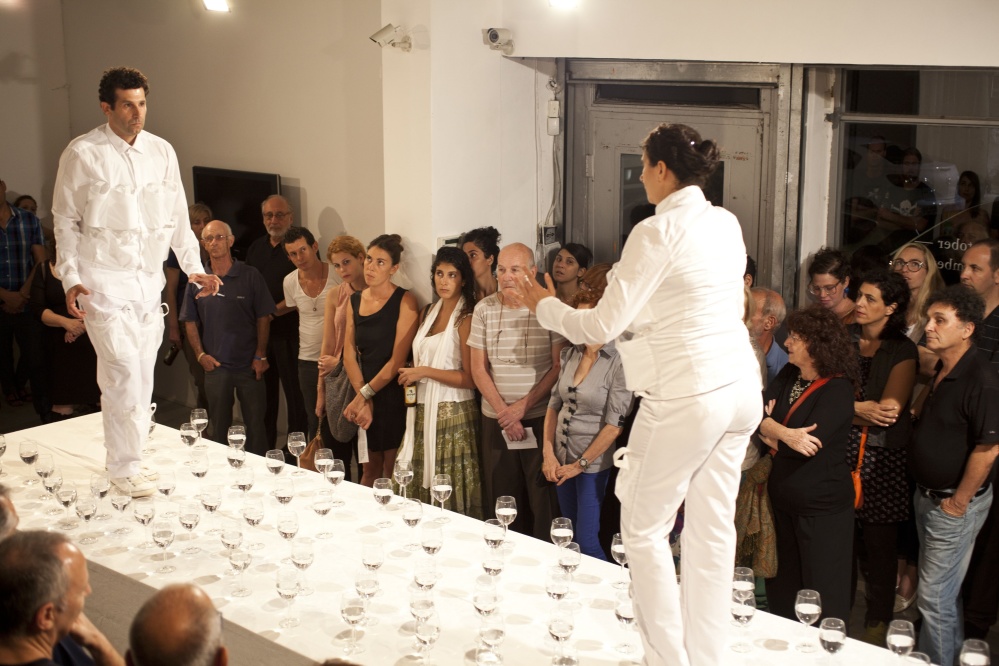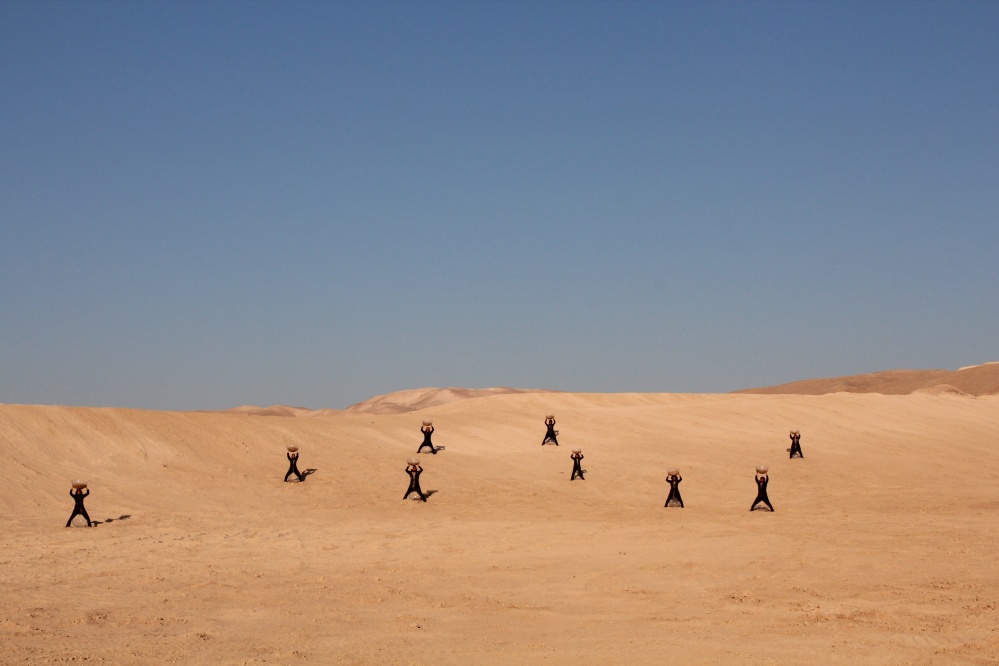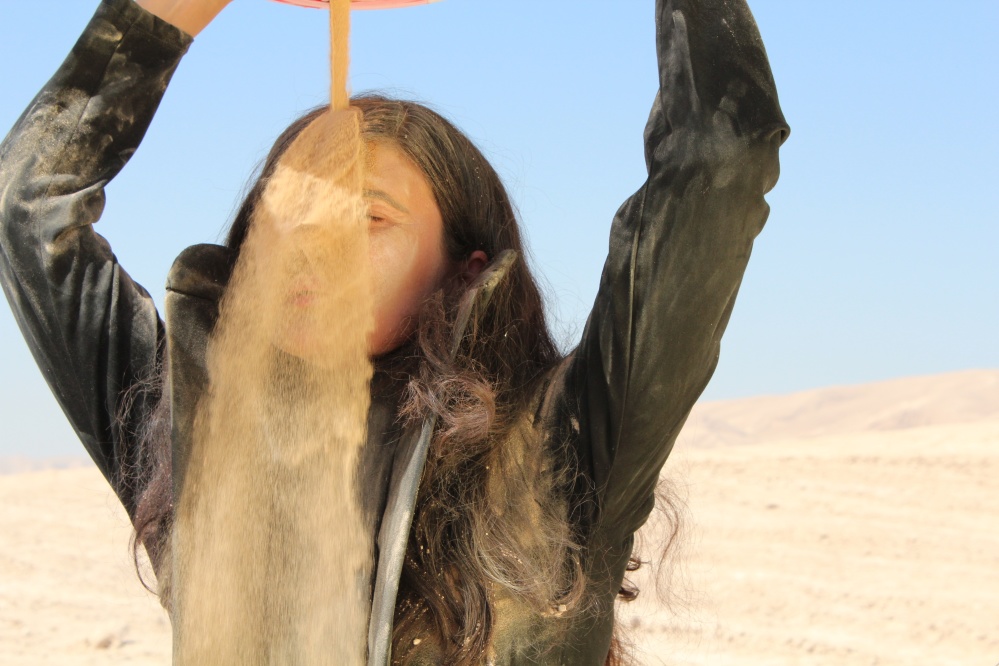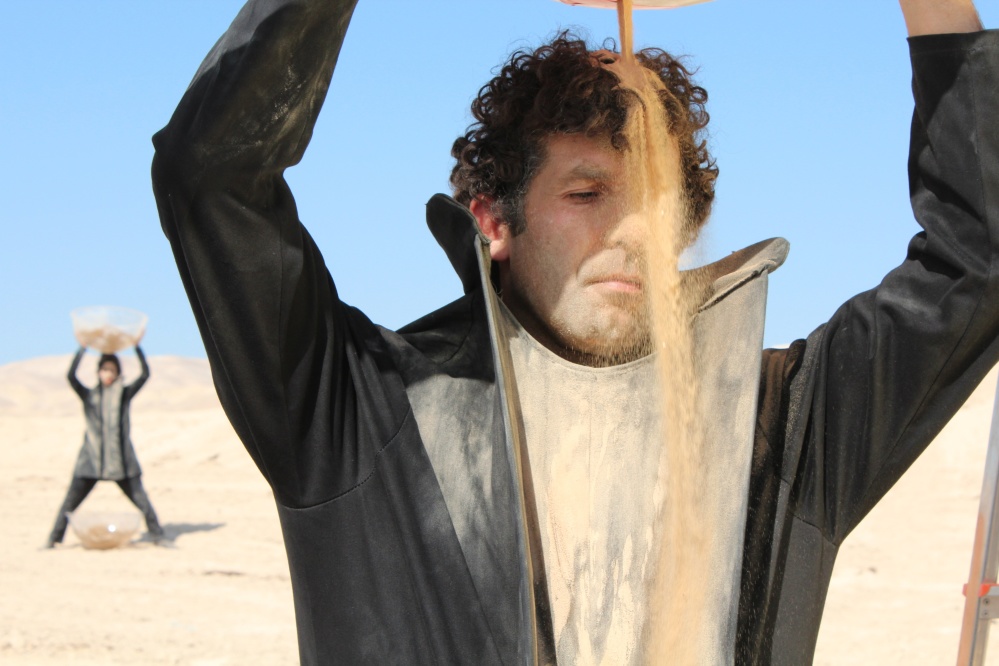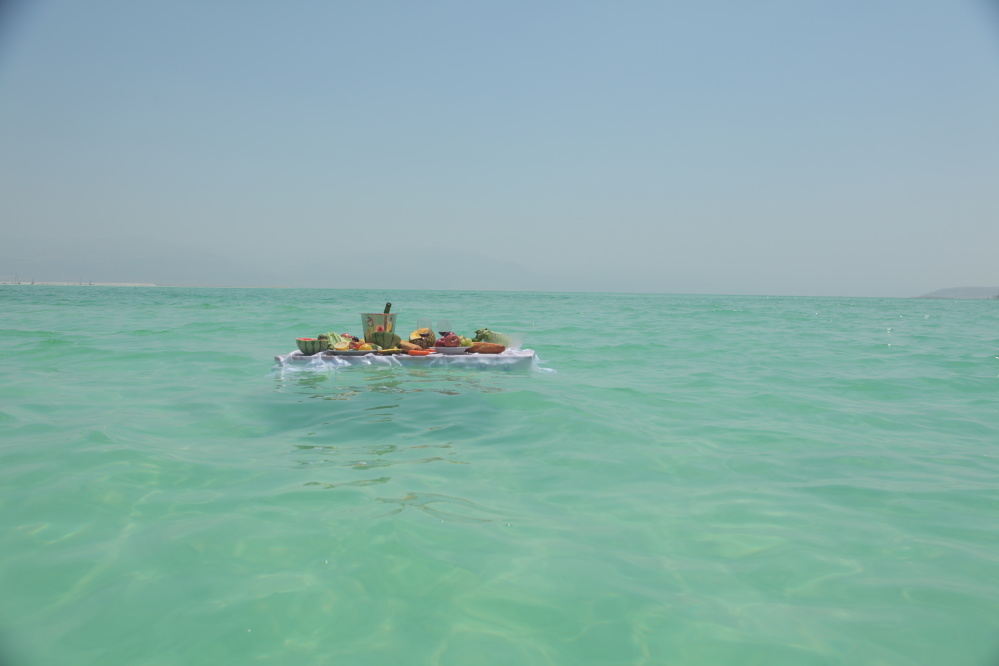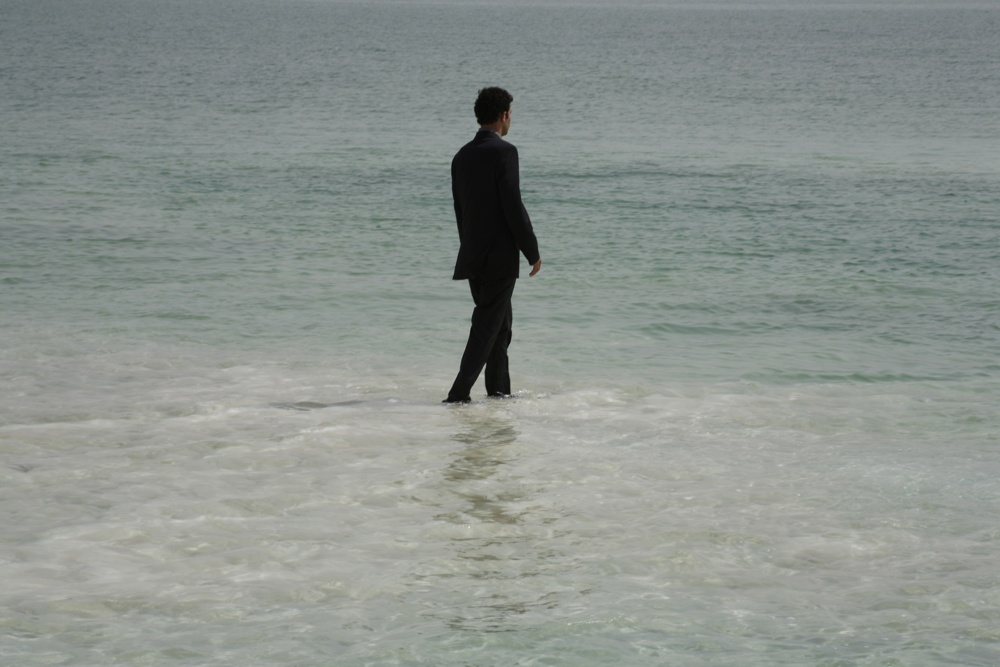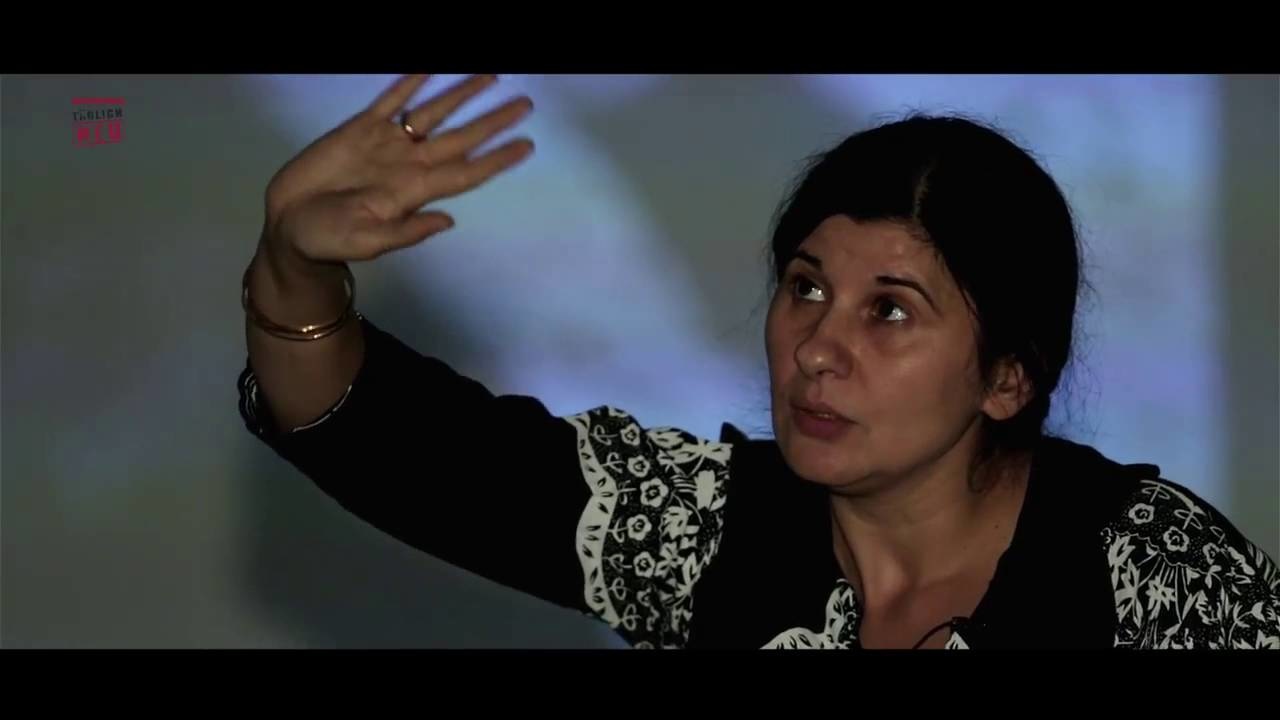Nezaket Ekici and Shahar Marcus
10.10.2014 - 11.01.2015
They are encounters under extreme circumstances: in the Dead Sea, in the desert, underground, as partners, in confrontation, in a fight for survival. In Relation is a joint project by the Turkish-German performance artist Nezaket Ekici (* 1970) and the Israeli artist Shahar Marcus (* 1971). Their physical meeting in the various performances that the two have developed and realized since 2012 symbolizes a grappling with elementary questions, such as one’s own position in time, space, culture, and religion. As performers with many years of experience internationally, they employ their own bodies as a medium to build up forces and energies, to resolve tensions and conflicts and make art about them. By pushing their own physical limits, they cause their works to revolve in no small measure around the limits of cultural and political difference.
In their video performance Salt Dinner, we see the two artists sharing a meal in the Dead Sea. They hand each other water-soaked food, drink wine, break bread—always careful to maintain balance and not to be carried away by the waves. It is an exhausting process that exposes them to excessive salt intake and the burning sun. An ironic metaphor for religious rituals and the presence of death in the midst of life.
Water and salt are recurring elements in the joint works of Ekici and Marcus. They are the basic prerequisites for our life but can also, as in the Dead Sea and the desert, mean its opposite. In their collaborative performances, the artists thus sensitize us to the fact that we have to constantly remain aware of the time and space in which we live, in which what apparently goes without saying no longer exists the next day and which everything flows. It is certainly, in the philosophical sense, about the insight that our lives move between this world and the beyond, thus representing a temporal event on the boundary between life and death. What remains in the end is, perhaps, the encounter with ourselves and the knowledge who we are—when alone and when engaging with another.
The performance installation Floating Ourselves shows Ekici and Marcus in confrontation with each other. They stand at opposite ends of a long table covered with countless glasses of water, each fixated on the other with deadly earnest. Infinitely slowly, they move toward each other without shifting their gazes. With each step forward, they empty a glass of water and place the glass in one of the pockets of their white costumes until they are filled to bursting. Finally, they stand facing each other and embrace at one go. What looks like a synchronous choreography is revealed over the course of the performance to be an act of force between characters who could not be more different.
These are powerful images for the encounter between people who differ in sex, temperament, and descent as well as metaphors for emotional, physical, and psychological tension, attractions and aversions in relation to each other.
On the occasion of their large-scale exhibition at the Stadtgalerie, Ekici and Marcus are taking a look at the history of mining in the Saarland in a new video production: shot in the middle of the industrial landscape on the Lydia slagheap and in the mysterious Schlossberg caves in Homburg. This video produced especially for and in Saarbrücken reflects the extraordinary character of a landscape characterized by mountain industry and illustrates its effects on human lives.
In the video performance Fossils, we encounter Ekici and Marcus as an isolated pair of human beings in a new desert: this time it is a gray landscape of slagheaps, where they move in search of useful (mineral) resources. What they find is what is left behind by coal mining: they bring this slag back whence it came: underground, into a mysterious labyrinth of caves where their camp is located. It consists of a bed, a resting place, but one that does not offer the performers any protection. Their camp appears to be extremely tense and constantly threatened by falling remnants of stone, until the bed becomes a coffin under the weight of the accumulated slag. Does humanity suffocate under what it has wrested from nature? Or is this too an image of the human connection to the earth on which they live and by which they, like all living things, are absorbed when they die.
